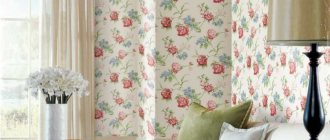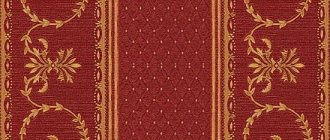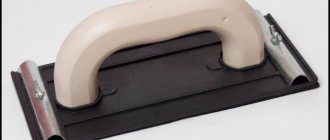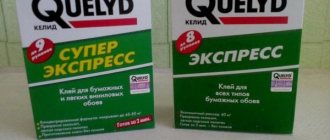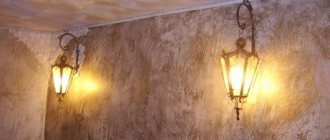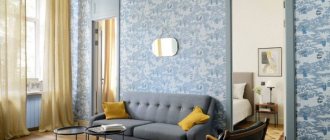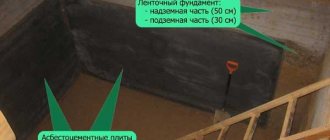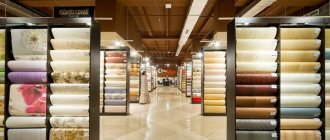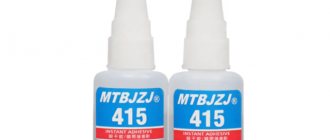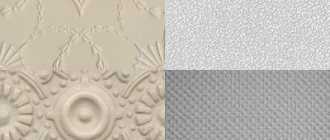Some finishing materials, even those intended for indoor use, can be not only harmful, but also hazardous to health. Since wallpaper is still the most common finish among other market offerings, you should understand which of them are the safest for health.
The choice of wall cladding from an environmental point of view should be based on several factors. This is not only the presence or absence of harmful chemical compounds in the composition, but also the ability of the canvas to freely pass air through itself. After all, if you stick “non-breathable” wallpaper in the bedroom, after a while you can understand that relaxing in such a room is not very comfortable. Before you go to the store, you should understand the question of which wallpaper is safe for health.
Which products are environmentally friendly?
The most favorable for creating a comfortable indoor microclimate are wallpapers that are made from natural raw materials. Ideally, artificial chemical components should not be among the ingredients at all. At all times, paper sheets were considered the most harmless, which, however, have many negative characteristics.
Firstly, they do not look as attractive as other types of wallpaper. Secondly, they are the least wear-resistant. Thirdly, even if the slightest dirt appears on such wallpaper, it will be quite difficult to get rid of unsightly stains, since a slight impact on the material will immediately lead to damage to the outer paper layer.
Environmental safety factors
If you want to choose the healthiest wallpaper for your home, you should be guided by several factors. The first of these is the type of materials used in production. It is the raw materials in the composition that determine the harmlessness of the finish. It must be made on a natural basis. Even if the technology involves the use of a synthetic base, it can lead to allergic reactions.
The second factor is the glue used. Not only the base itself can be environmentally safe or harmful to health. The glue used to connect layers or components to each other can also be made from a harmful binder. If you are wondering which wallpapers are not harmful to health, you should pay attention to the fact that the glue should be made on a starch basis.
Since recently the issue of recycling materials has become particularly acute on a planetary scale, you should select wallpaper that ensures safe disposal. When a consumer is interested in the question of which wallpaper is more environmentally friendly and harmless to health, he should be guided by the fact that the composition of the canvases does not include polymers. They are difficult to recycle, and when exposed to fire they can release harmful substances. This is important not only at the stage of disposal, but also during operation. If a fire occurs, the finishing itself can not only pose a danger in terms of rapid ignition and further spread of fire, but also begin to release harmful substances into the air.
Why is this becoming increasingly important?
Beginning in the mid-20th century, wallpaper manufacturers began to add so-called “improvements” to their products: vinyl or PVC, formaldehyde, chemical dyes, fungicides and powerful adhesives. Thanks to these additives, wallpaper acquired amazing properties: high strength, light and water resistance, durability, etc.
Unfortunately, with all this there are by-products - volatile organic compounds (VOCs). These are toxic gases that are emitted by various solvents, plastics, paints and adhesives contained in wallpaper. They can cause occasional headaches, dizziness, blurred vision, memory loss, respiratory problems, and even liver or kidney problems. By being careless in the selection of different materials for your home, you can cause serious damage not only to the environment, but also to your health.
Selection rules
If you are dealing with the question of which wallpapers are not harmful to health, you should immediately pay attention to paper canvases. Their simple composition without additional complex compounds explains their low cost. The canvases are light and very thin, so they are easy to stick to the wall. Since the finish breathes, it does not require bactericidal substances, which in other similar cladding prevent the occurrence and spread of mold and mildew. But even this type of decorative material can be dangerous to health because after 5 years it begins to deteriorate and release paper dust, which acts as an active allergen. Therefore, it is recommended to change the wallpaper after a certain period of time.
When a consumer decides which wallpaper is not harmful to health, he should try to abandon the vinyl variety. It is divided into breathable and non-breathable fabrics. It is almost impossible to visually distinguish the former from the latter.
Attention! Breathable vinyl wallpaper is made on a polymer base, but has pores through which air passes.
Non-woven wallpaper can be harmless or hazardous to health. It all depends on what the outer layer is made of. The base is non-woven fabric, but on the outside there may also be vinyl, which is dangerous. If the non-woven fabric is combined with a paper outer layer, then the fabrics do not lose their ability to breathe. But even in this case, production involves the use of polymer additives.
Ecostyle in the apartment
Eco-style has been in fashion for several years, but in pursuit of external naturalness, we sometimes forget about the essence of the trend.
To figure out how to arrange a truly eco-friendly home, we attended a lecture by designer Marina Volkova “Ecostyle. Materials, techniques, technologies”, which took place as part of the InDecor exhibition currently taking place in Moscow. We share with you the main points. “Eco-style as a design trend is the use of wood cuts, stumps, wooden ceiling beams, and rough plaster in the interior, imitating the walls of a private house. But actually environmentally friendly, that is, harmless, with a healthy atmosphere, you can make any interior, even modern, full of straight lines and metal parts.”
Types of eco-friendly wallpaper
When deciding which wallpaper is the safest for health, you should pay attention to some types of modern finishes. They may cost a little more, but they look much more attractive than their harmful counterparts. Among other market offerings, we can highlight fiberglass wallpaper, which not only breathes, but also allows the consumer to color the canvases taking into account their own aesthetic preferences.
Vegetable
This eco-friendly finish is based on natural fibers, namely:
- nettle;
- cane;
- sisal;
- bamboo;
- jute.
A more expensive type of such natural wallpaper is made from valuable wood. The raw material takes the form of the thinnest layer possible, which is connected to a non-woven or paper base. Production technology involves the use of:
- traffic jams;
- cherries;
- veneer;
- apricot
On sale you can find finishing, the outer layer of which is made of leaves.
Woody
When consumers are wondering which wallpapers are healthy, they should look to environmentally friendly wood-based finishes. We are talking about structural canvases, which are at the peak of popularity in Europe today. This cladding has all the advantages of non-woven wallpaper. In addition to the fact that such wallpapers are safe, they are also very tear-resistant. A bonus for the consumer is the ability to repaint the cladding.
Paper
If there is a need to quickly and inexpensively update the walls in a room, you should choose wallpaper that is not at all harmful to health. We are talking about paper cladding, which, perhaps, cannot be found more environmentally friendly. The material can be single-layer or multi-layer. On sale you can find structured and embossed varieties of such wallpaper, the latter of which are cached and made on a paper basis.
Made from recycled materials
Such wallpaper is suitable for those who are concerned not only about meeting their own needs, but also about the fate of the planet. Do not assume that finishing materials made from recycled materials will look unattractive. On the contrary, today these are the latest trends in interior design.
The production technology of such cladding may involve the use of:
- glass;
- paper;
- metal
Moreover, in the United States today, more than 80% of wallpaper is made from recycled glass. The appearance of such paintings is truly unique, since the decorative layer is formed from a mosaic. If the consumer is interested in which wallpapers are more harmless than others, he should pay special attention to finishes that have low water absorption, which means they can be used even in damp rooms.
Textile
If there is not enough air in the room and you want the coating to contain only natural ingredients, you should choose textile wallpaper. Their varieties are offered in a wide range. The following varieties can be found on sale:
- linen;
- jute;
- silk;
- jacquard;
- cotton;
- velor;
- felt
If desired, you can choose synthetic wallpaper or paper-based trim. Fabric cladding offers a wide range of models. This is aesthetics at its highest and environmental friendliness. It is based on natural threads and natural dyes. The backing can be non-woven or paper. An additional advantage of such wallpaper is its resistance to light.
Non-woven
If a housewife is interested in the question of which wallpaper will always remain clean, she should consider non-woven wallpaper, which is ready to last a truly long time. The top coating is responsible for the quality here. But environmental friendliness and excellent quality characteristics can be overshadowed by the complex process of gluing the canvases. They have an impressive weight, so they require a special approach and thick glue. The bonus is that the coating can be painted in any color.
Attention! In order to paint non-woven wallpaper, you should choose a water-based composition. It is not only suitable for this type of finishing, but is also completely safe for health.
Made from fiberglass
When choosing environmentally friendly wallpaper, you should evaluate the harm of other types of finishes and consider glass wallpaper. They are suitable for painting and are made from glass raw materials. Due to this, the coating remains resistant to fire.
The consumer can count on wear resistance and durability. With the help of such cladding you can create a unique interior in almost any style. The canvases can be based on:
- limestone;
- clay;
- soda;
- quartz sand.
All these are natural components with absolute environmental friendliness.
Cork and other coverings
The production process involves the use of raw materials in the form of oak bark. Wallpaper can have a backing made of non-woven or paper. The color palette is usually limited to warm shades and is not rich.
The production technology involves grinding oak bark, which is combined with an adhesive substance. The resulting slurry is applied to a base made of paper or non-woven fabric. An additional advantage of this coating is its ability to reduce noise.
If we consider other types of cork wallpaper, they are:
- self-adhesive;
- without base;
- liquid.
With the help of the former, repairs can be carried out in the shortest possible time. Installation of canvases is greatly simplified. Such dense ones can be used to paste over not only walls, but also door panels, as well as furniture. The most environmentally friendly wallpaper is baseless wallpaper, which is fragile.
Attention! Liquid cork wallpaper is used not only for interior surfaces, but also for building facades. And application is carried out mechanically or using a spatula. Therefore, the liquid variety of cork wallpaper only has this name. In fact, it is something between decorative plaster and liquid wallpaper.
Hypoallergenic wallpaper Vitrulan
Vitrulan glass wallpaper has high hypoallergenic qualities and is ideal for covering children's rooms and bedrooms, medical facilities and kindergartens, in short, anywhere where special requirements are placed on wallpaper.
A European manufacturer with unquestioned authority, Vitrulan uses only high-quality materials, high-tech equipment in production and is constantly looking for innovative solutions for the benefit of its customers.
High-quality Vitrulan glass wallpaper solves the problem of hypoallergenic finishing for a long time. Their service life is 30 years, during which up to 20 layers of paint can be applied to the walls without losing the original texture. High anti-vandal characteristics and unsurpassed wear resistance make Vitrulan glass wallpaper the best choice for rooms with a high rate of contamination of the finish.
A wide range of products will allow you to choose the appropriate option for any type of room and budget. Take care of the health of your loved ones - choose Vitrulan hypoallergenic glass wallpaper!
Consumer reviews and expert advice
- According to consumers, the harm of vinyl wallpaper is quite real. Only some types of such paintings do not have a negative impact on human health. But if the material ignites, it can begin to release formaldehyde, and its harm is already widely known.
- Before renovating the bathroom, consumers are advised to choose wallpaper that is not only harmless, but also will not lose its appearance from constant contact with moist air. The safest are liquid wallpapers, which are based only on cellulose fibers and fabric, and they are not even connected to each other with an adhesive substance. But such finishing, according to buyers, quickly becomes unusable in a bathroom environment.
- Experts do not recommend purchasing Chinese analogues of wallpaper. Most often, such finishing is cheap, but is made from extremely low-quality raw materials. Even when choosing the most harmless wall decoration, you may come across a material that contains harmful compounds.
Stone elements
Wall decoration with stone is used in many interior styles, ranging from classic to modern and art deco.
Thanks to the combination of several different stone elements, the room looks very luxurious and elegant. In addition, stone perfectly complements other environmentally friendly materials - glass and wood.
The advantage of using stones in decorative wall decoration is that they are highly resistant to any external influences, are characterized by a significant variety of shapes, sizes, colors and look very good for many years in a row.
Read also

